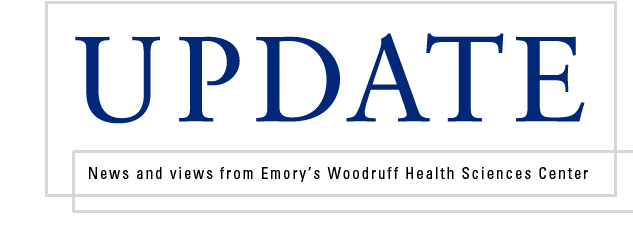Emory research funding exceeds
$535 million
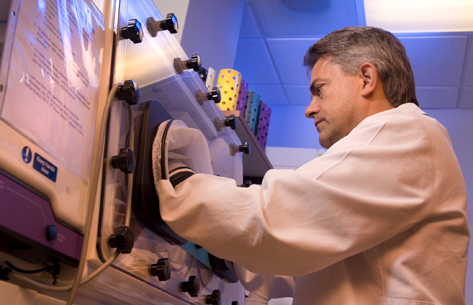 |
| Winship brain tumor researcher Erwin Van Meir was chosen by NIH to participate in the Cancer Genome Atlas, for which patients are asked to contribute cancer tissue and blood samples, which are analyzed to catalog DNA alterations. Van Meir's involvement relates to glioblastoma, the most aggressive form of brain cancer. |
Emory scientists received $535.1 million from external funding agencies in fiscal year 2010—an increase of 10.5% over fiscal year 2009. Research funding in Emory’s Woodruff Health Sciences Center (WHSC) was $500.7 million.
More than 74% of the funds, or $396.5 million, were awarded by federal agencies, led by the NIH with $350.5 million. NIH funding increased by 17.4% over FY09 and represented 88.4% of total federal dollars awarded to Emory and more than 65% of all funding received.
| |
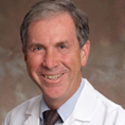 |
| |
David Stephens is WHSC VP for research. |
Over the past five years, Emory’s research funding has grown from $353.9 million in FY06 to $535.1 million in FY10, representing a 51.2% increase.
Emory's School of Medicine received $347.7 million, for approximately 65% of the total dollars awarded and an 8.1% increase from FY09. Yerkes National Primate Research Center received $78.3 million—an increase of 37% from FY09.
The Rollins School of Public Health received $63.9 million, or an increase of 6.5%. The Nell Hodgson Woodruff School of Nursing received $7.3 million, or an increase of 208% from FY09.
Of the total funds awarded, $90.4 million were awarded from federal funds through the American Recovery and Reinvestment Act (ARRA). Read more.
An upcoming issue of this newsletter will highlight WHSC research from the past year.
Top
New milestone for public health
| |
 |
| |
Claudia Nance Rollins Building |
| |
|
Emory's reputation as a destination university has grown stronger with the opening of a second building for the Rollins School of Public Health (RSPH). Yesterday, members of the Rollins family and the Emory community dedicated the Claudia Nance Rollins Building, which houses a growing body of students and faculty from around the world. The nine-story building is named for the mother of longtime Emory benefactor O. Wayne Rollins and his brother John, thus extending the family's ties with the school to five generations.
Fittingly, the new building is connected by a glass-enclosed bridge to the Grace Crum Rollins Building, named in honor of O. Wayne's wife. In 2007, the Rollins family made a $50 million commitment toward the $90 million cost to construct a second building and renovate the Grace Crum Rollins Building, which was completed in 1994.
The dedication of the Claudia Nance Rollins Building coincides with several school milestones this year—the 35th anniversary of the public health program, the 20th anniversary of the school, and James Curran's 15th year as dean. Since construction of the new building began in 2008, the school experienced record enrollment of new MPH/MSPH students in 2009 and 2010. What began as a master's program with 16 students in 1975 has evolved to become one of the top 10 public health schools in the nation with more than 1,000 students.
This accomplishment was top of mind for Emory President James Wagner when he spoke during the dedication of the CNR Building. “This year, Rollins had more applicants for admission than any other school of public health in the country, except for the considerably older and larger Johns Hopkins,” he said. “For students seeking global health careers, no institution attracted more applicants than Rollins. Dean Curran has said often that this surge of interest on the part of students—and from potential faculty and research/program partners—is without a doubt due in part to the promise of the Claudia Nance Rollins Building.”
The new building is home to the departments of epidemiology, environmental health, and global health. It also provides additional teaching and meeting space, including the 250-seat Rollins Auditorium, and three floors of laboratory space. Renovation of the Grace Crum Rollins Building created additional study and computer space for students and expanded space for both student and career services. The renovation also provides more space for the Department of Biostatistics and Informatics (to accommodate a growing number of collaborative partnerships) and Information Services, which manages new high-tech audiovisual capabilities in both buildings. Also housed in the GCR Building is a new indoor/outdoor café to serve health sciences faculty and students and visitors from the CDC and the Atlanta community.
Read more about the building. Read a timeline of the school's history.
Top
Promising results from heart valve study
| |
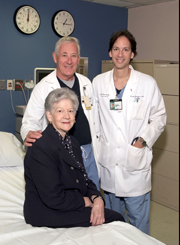 |
| |
Emory heart patient Glenrose Gay of Vidalia with Emory cardiologists Peter Block and Vasilis Babaliaros. Gay was the first person in Georgia to receive a new aortic valve via catheter. |
| |
|
Based on study results published last month in New England Journal of Medicine, catheter delivery of heart valves should become the new standard of care for patients unable to undergo surgery for heart valve replacement.
Since October 2007, Emory University Hospital has been one of approximately 20 hospitals nationwide and the only site in Georgia studying a non-surgical treatment option for patients suffering from severe aortic stenosis.
As part of the phase 2 clinical trial, Emory Heart & Vascular Center cardiologists and cardiothoracic surgeons performed transcatheter aortic valve implantation (TAVI), comparing this procedure with traditional, open-heart surgery or medication therapy in high-risk patients with aortic stenosis.
During the TAVI procedure, doctors create a small incision in the groin or chest wall and then feed the new valve, mounted on a wire mesh on a catheter. Once the catheter is properly positioned in the opening of the aortic valve, the new valve is rapidly expanded. As it expands, it pushes the diseased, native valve aside, allowing blood to flow normally through the implanted valve to the rest of the body.
Peter Block, the study's principal investigator (PI), and fellow interventional cardiologist Vasilis Babaliaros led the Emory trial along with their surgical colleagues, Robert Guyton (co-PI) and Vinod Thourani.
TAVI is not yet approved by the U.S. Food and Drug Administration (FDA) and therefore is available in only a few centers throughout the country. Approximately 90 patients have received new valves at Emory since the clinical trial started in 2007. TAVI is expected to receive FDA approval in late 2011. Read more. Watch a TV ad about this procedure.
Top
Emory Healthcare, Georgia Tech Athletics form partnership
Through a new multi-year partnership agreement between Emory and Georgia Tech, Emory Healthcare will become the official health care system for all Yellow Jacket sports.
The agreement with Georgia Tech and ISP Sports, the exclusive multimedia rights holder for Tech Athletics, will provide Emory Healthcare with extensive media exposure, including radio and television sponsorships, highly visible signage in Tech’s three major campus venues, and prominent advertising in Yellow Jacket sports publications and on the school’s official athletics website.
| |
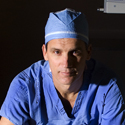 |
| |
John Xerogeanes |
"Working with athletes participating at the Division One level requires a uniquely equipped team to provide medical care and counsel," says John Xerogeanes, chief of the Emory Sports Medicine Center, who is entering his 11th year as head orthopaedist and team physician for all Georgia Tech athletic teams.
He says the partnership with Georgia Tech and ISP brings a new component to a long-standing relationship. "It is exciting that we can now align our brands with Georgia Tech through a partnership as official health care system. We have been providing outstanding care to these championship caliber athletes for over a decade now and have established a stellar level of trust and support from the student-athletes, their parents, and the university at large." Read more.
Top
Using data to improve patient satisfaction
One in a series of profiles of people in the Woodruff Health Sciences Center
| |
 |
| |
Redge Hanna |
| |
|
Scottish poet Robert Burns once wrote, "O would some power the giftie gie us to see ourselves as others see us." Emory Healthcare physicians, staff, and managers get that power on a regular basis, thanks to responses from surveys sent regularly to patients based on samples from more than 950,000 services provided. They also get data from surveys sent regularly to all employees. The goal of all that information, says Redge Hanna, director of service performance, is to measure the perspective of those who receive Emory Healthcare's services and those who provide the services.
An outside performance evaluation company (Press Ganey) handles mailing, collection, and benchmarking of the surveys, but Hanna and his team analyze and report the results to units throughout Emory Healthcare. Responses are both global, comparing EHC's with those at peer institutions, and "locally relevant," one of Hanna's favorite phrases, which means they are sorted by specific sites, such as 4G Emory University Hospital, ambulatory surgery at Executive Park, or internal medicine at EUH Midtown.
Another part of his job, the part he calls "alert and align," is working with the leaders who can make changes that will move the data toward change needed for improvement. For example, survey data about patient desires for more communication helped support a change in the way nurses ending their shift communicate with those coming in for the next shift. Once performed at the nursing station or even in recorded messages, shift-change communication is now done in the room with the patient and family members present. Patient satisfaction scores (and consequently national ranking) shot up after this new process was implemented.
Biostats:
• Dir., Service Performance, Emory Healthcare
• Project Mgr, Service Performance, EHC
• Manager, Outreach and Employee Development, Wesley Woods Hospital
• Health care consultant (appointed by Atlanta mayor to supervise task force to ensure uninterrupted home health visits for 67 health care agencies during the 1996 Summer Olympic Games)
• Co-founder and director of operations, Portsbridge Inpatient Hospice, DeKalb County
• Owner, Belmeade Assisted Living Home, Dunwoody
• Georgia College, business admin
|
|
| |
|
An employee survey highlighting a need to improve employee recognition is another example of how survey data moved the needle to get results. Responding to this employee feedback provided an opportunity to link employee survey data with patient survey data. Senior Emory Healthcare leaders now regularly deliver fruit, granola, and nuts to employees in the areas ranked in the top 10% in the national patient satisfaction database. (Employee focus groups chose the healthy snacks as an appropriate gift.) In the past fiscal year, leaders delivered more than 20,000 of these healthy snacks, with congratulations and thanks, at all hours around the clock. And just as hoped, the data moved correspondingly to show greater patient satisfaction and employee appreciation in these areas.
Survey data also were invaluable for the teams of physicians, employees, and patients involved in designing Emory University Orthopaedic and Spine Hospital. Hanna says such data proves that best-in-quality satisfaction scores can be achieved and maintained.
In addition to analyzing survey results and facilitating action based on those results, Hanna's group obtains information on how many people are actually responding to Emory's surveys. He is pleased to note that in a recent physician survey, Emory Healthcare physicians had the highest participation of any academic medical center in the country.
Hanna would like to see the data move to implement change more speedily. He hopes eventually that surveys will cover what happens during patient transitions from one jurisdiction to another, such as when the patient leaves the hospital and eventually returns to the physician's office. (He knows such transitions personally, having been paralyzed for a short time at age 7 and having been transferred among various clinics and hospitals.)
"The really cool part of my job," he says, is "watching Emory Healthcare tap into the possibilities to create the ideal patient experience and work environment."
Top
Testing the mattress
| |
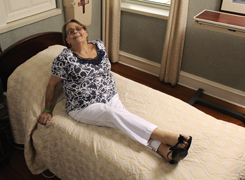 |
| |
Transplant patient Beth Kasulaitis helped Emory Healthcare choose new mattress pads for Emory University Hospital's operating suites. |
Two years ago, Beth Kasulaitis was in a bed at Emory University Hospital recovering from a liver transplant. Recently, Kasulaitis was back at Emory in another hospital bed, but this time, there was no surgery involved. Instead she was trying out enhanced mattress pads for Emory’s operating suites as a patient adviser who evaluated the potential offerings. The pads keep patients comfortable and secure after surgery and help prevent pressure ulcers that often occur when a patient is bed-bound.
Who better to try out the new pads than the people who are going to use them, Kasulaitis asks. And what did she learn? The memory-foam technology in one mattress was developed originally for use in outer space. Another mattress moved air to different areas in response to pressure. One used water to mold to the body. Kasulaitis examined the mattresses inside and out, but in the end, she was more interested in how they felt than in how they were built.
Getting patients and families involved in nuts-and-bolts decisions like choosing mattresses is a goal of Emory Healthcare. Kasulaitis welcomes the opportunity to give feedback to the Emory doctors and nurses “who embraced me and lifted me up" during the transplant.
Today, in addition to caring for her husband, who is ill, she serves as the lead mentor for liver transplant patients at Emory, works on the Patient-Family Advisory Council, and volunteers for other transplant organizations. Hospital COO Bob Bachman has dubbed her the “Jiminy Cricket,” or conscience of Emory Healthcare. She helps administrators and staff understand the patient’s point of view, evaluates bedside shift change procedures, serves on editorial boards, and once in a while, chooses a good mattress. —Rhonda Mullen
Top |
|
 |
|
From the
Interim EVPHA
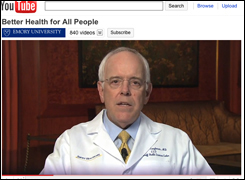 |
| S. Wright Caughman |
| |
Watch the video above, or, if you prefer, read the transcript below:
Better health for all people
Hi, I'm Wright Caughman. After 20 years with Emory, I'm excited to serve the institution in my new capacity as interim CEO of the Woodruff Health Sciences Center.
Even after all these years, I still look forward to coming here every day, and I hope that you do too—because every member of the health sciences family here at Emory plays an important role in helping us achieve a vision that we can all feel good about … better health for all people. It takes the passionate commitment of all of us—every person in every unit—to achieve it. When we work together in an aligned, integrated way, we can channel our passion for health and healing into something that is truly extraordinary.
Each and every day, we get the satisfaction of interacting with bright, talented students who have a passion for helping others through medicine, nursing, and public health; the excitement of working toward breakthroughs in health-related research; and the reward of knowing we're making a difference in the lives of patients in need and their loved ones. It is truly a privilege to be involved in missions that have such meaningful impact on the lives of others.
But beyond the day-to-day, we do this work because it lays the groundwork for a healthier future—not only for the people we serve here and now, but for generations to follow here in Atlanta and around the world. Our students will be doctors, nurses, and champions of population health around the world for decades to come, and they will in turn teach others. Our research breakthroughs will be translated from the lab to the bedside, where they have the most potential to save and improve lives. And our patients will live longer, healthier lives.
That's why I have such a passion for our vision of transforming health and healing— because we're not only doing what matters today, but also what will continue to matter well into the future … for the thousands of people whose lives we touch every day and for all those yet to come. And it's why I'm so grateful to each of you for the lasting and tangible difference you help us make in real people's lives, today and every day.
As we begin a new fiscal year, I know we face some challenges, but we also face opportunities to expand on our lifesaving and life-affirming work and make it even more impactful. I'm looking forward to working together with you to make the most of the opportunities that lie before us. Thank you again for all that you do for the Woodruff Health Sciences Center and Emory.
Please send your thoughts and suggestions to evphafeedback@emory.edu.
In brief
Funding for statewide trauma system on November ballot
Legislation passed by the Georgia General Assembly this year gives Georgia voters the chance to vote yes or no in the election on November 2 for the state to charge an annual car registration fee of $10 to support trauma care throughout Georgia. If approved, Amendment No. 2 will provide direct funding to expand trauma services in the state. Georgia currently lags behind other states in trauma care. The state has 16 trauma centers, including Grady Hospital (level 1), but needs as many as 30. The lack of trauma centers translates to a higher mortality rate for those needing trauma care.
Emory and St. Joseph's end collaboration talks
Following several months of discussion, Emory Healthcare and St. Joseph's Hospital have decided not to pursue a joint venture partnership. Read more.
Discover your health
Emory's Center for Health Discovery and Well Being offers a program in which you can receive a personalized health assessment, learn your biomarkers health profile, and collaborate with a health partner to meet your goals. Call 404-686-6190 to learn about special pricing for Emory employees to enroll in this program. Visit the center's website, and read the Discover Your Health blog.
News from Ethiopia
A new e-letter, MaNHEP News, brings updates on a quarterly basis from the nursing school's Maternal and Newborn Health in Ethiopia Partnership, which is funded by an $8.1 million grant from the Bill and Melinda Gates Foundation.
New resource for investigators
The Atlanta Clinical and Translational Science Institute (ACTSI) has a new resource for investigators called Studio Consultations to aid in design and implementation of research proposals. A studio consultation is a pre-review by a panel of experts designed to improve a researcher's chances of success. It can assist researchers in biostatistics, bioinformatics, database development, project generation planning, research design, and protocol planning and implementation.
To arrange for a studio consultation, please complete the ACTSI Submit a Request form. Researchers can reserve a 30- or 60-minute time block for consultation. Consultation times are scheduled between 1:00 and 3:00 p.m. on the first Friday of each month in WHSCAB, Room 102.
Did you miss the Emory Healthcare 500?
View a slide show of event highlights.
Notables
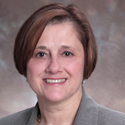 |
|
| Diane Cassels |
|
| |
|
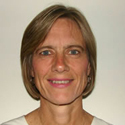 |
|
| Nancy Collop |
|
| |
|
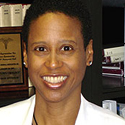 |
|
| Jenelle Foote |
|
| |
|
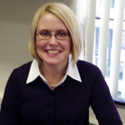 |
|
| Jeanne Kowalski |
|
| |
|
 |
|
| Wendy Wright |
|
| |
|
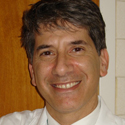 |
|
| Joel Zivot |
|
Diane Cassels has been named executive administrator for Winship Cancer Institute. She is also administrator of radiation oncology. Read more. Nancy Collop (pulmonology) is the new director of the Emory Sleep Center. She comes to Emory from Johns Hopkins, where she directed the sleep center. Read more. Jenelle Foote, a community physician (urology) at Emory University Hospital Midtown, is a new member of the Emory Healthcare board. She replaces Norman Elliott, whose two-year term expired in August. Jeanne Kowalski is Winship Cancer Institute's new director of biostatistics and bioinformatics. She is also assoc. professor of biostatistics in Rollins School of Public Health. She comes to Emory from the Sidney Kimmel Cancer Center at Johns Hopkins. Read more. Wendy Wright (neurology) is medical director of the neuro ICU at Emory University Hospital Midtown (EUHM). Read more. Joel Zivot (anesthesiology) is medical director of EUHM's cardiothoracic ICU. Read more.
Upcoming events
Oct. 12: Medicine State-of-the-School address, 5:00 p.m. WHSCAB auditorium. Reception to follow.
Oct. 13: Nursing State-of-the-School address, 4:00 p.m. Main auditorium, nursing school. Reception to follow.
Oct. 19: Quality Shmality: What's the Big Deal with Dying? Noon. EUH Auditorium. Medical Grand Rounds lecture by Karl Lorenz, director, VA Palliative Care Quality Improvement Resource Center, and assoc prof., UCLA Geffen School of Medicine. More info.
Oct. 21: Emory Healthcare Quality Conference, 7:30 a.m. to noon. Cox Hall ballroom. Broadcast sites at EUH, EUHM, EUOSH, WW. For more info, call Shannon Kowall, 404-686-7288.
Oct. 30: American Heart Association's annual Heart Walk. More info. Contact Adam Tribbett, emoryheartwalk@heart.org, 404-778-2926.
Nov. 4-5: Winship Cancer Institute research and career development symposium. Winship C-5012. More info.
Feb. 24: 2011 State-of-the-WHSC address. 4:30 p.m. WHSCAB auditorium. Reception to follow. |

